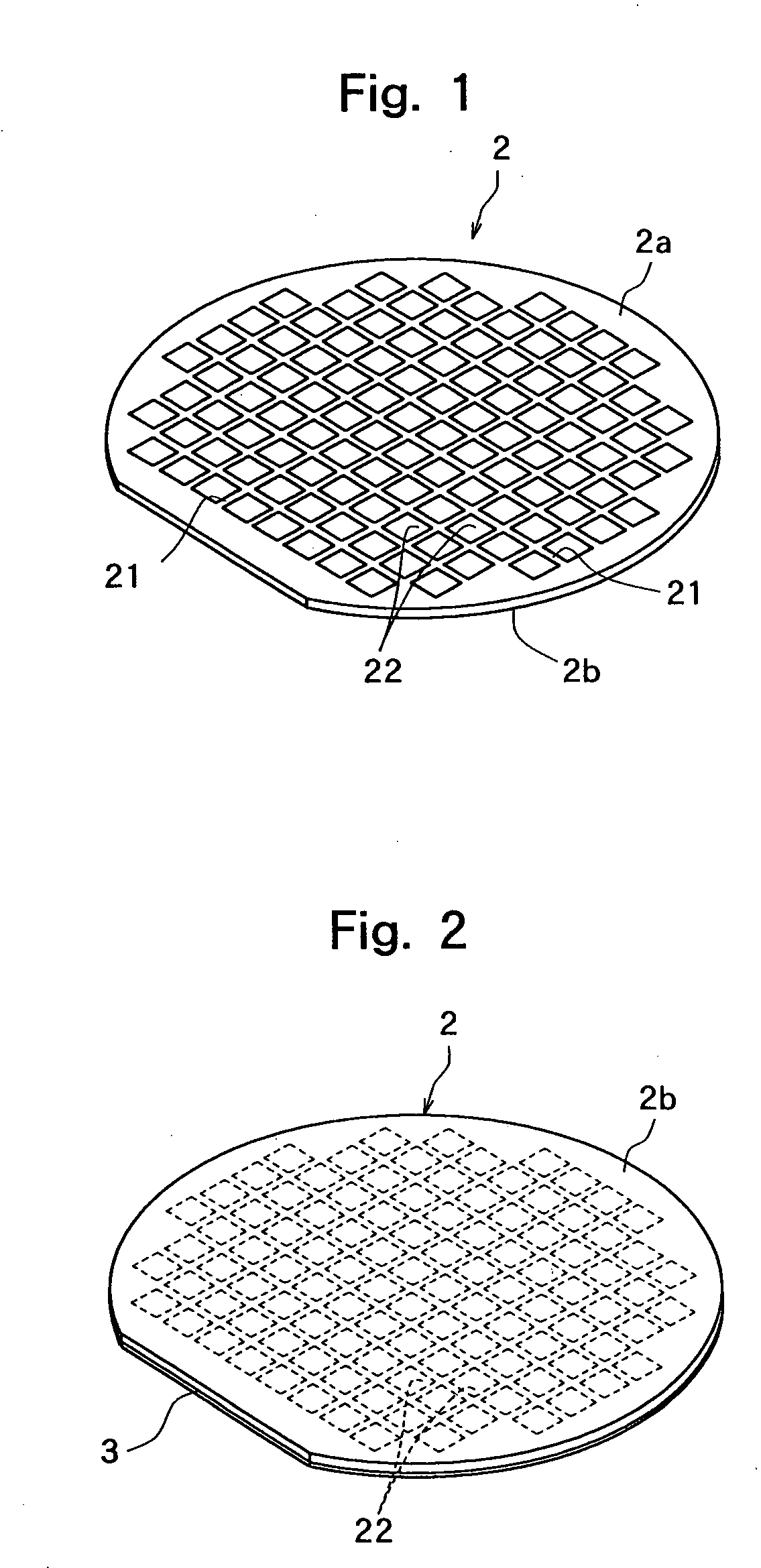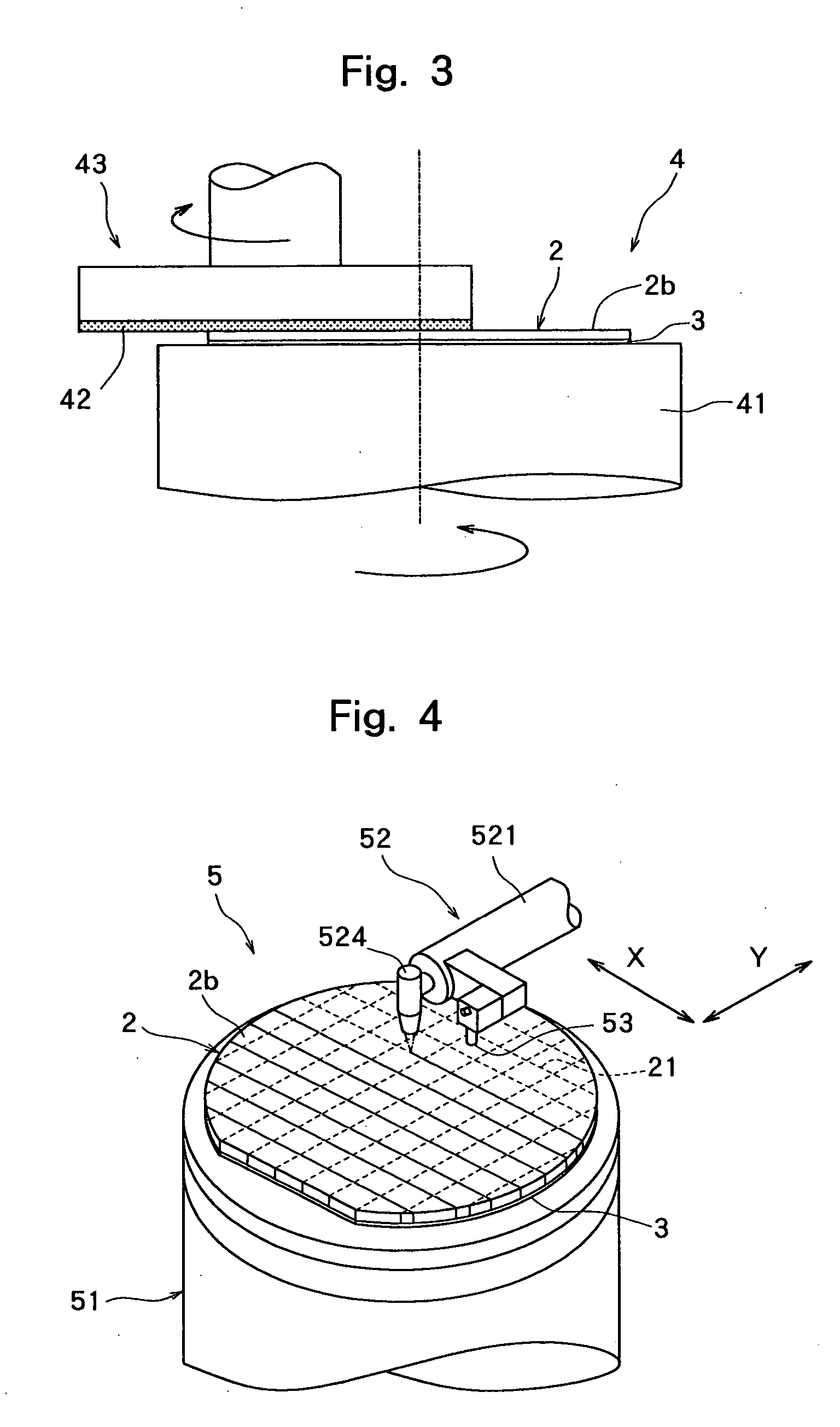Wafer dividing method
a dividing method and dividing line technology, applied in the field of dividing lines, can solve the problems of reducing productivity, reducing productivity, and not always easy cutting with the above-mentioned cutting blades
- Summary
- Abstract
- Description
- Claims
- Application Information
AI Technical Summary
Benefits of technology
Problems solved by technology
Method used
Image
Examples
Embodiment Construction
[0046] Preferred embodiments of the present invention will be described in detail hereinunder with reference to the accompanying drawings.
[0047]FIG. 1 is a perspective view of a semiconductor wafer as a wafer to be divided according to the present invention. The semiconductor wafer 2 shown in FIG. 1 is a silicon wafer having a plurality of dividing lines 21 formed in a lattice pattern on the front surface 2a, and circuits 22 are formed as function elements in a plurality of areas sectioned by the plurality of dividing lines 21. A protective member 3 is affixed to the front surface 2a of the thus constituted semiconductor wafer 2, as shown in FIG. 2 (protective member affixing step).
[0048] After the protective member affixing step is carried out to affix the protective member 3 to the front surface 2a of the semiconductor wafer 2, there comes a polish step for polishing the back surface 2b of the semiconductor wafer 2 to make it into a mirror surface. This polishing step is carried...
PUM
 Login to View More
Login to View More Abstract
Description
Claims
Application Information
 Login to View More
Login to View More - R&D
- Intellectual Property
- Life Sciences
- Materials
- Tech Scout
- Unparalleled Data Quality
- Higher Quality Content
- 60% Fewer Hallucinations
Browse by: Latest US Patents, China's latest patents, Technical Efficacy Thesaurus, Application Domain, Technology Topic, Popular Technical Reports.
© 2025 PatSnap. All rights reserved.Legal|Privacy policy|Modern Slavery Act Transparency Statement|Sitemap|About US| Contact US: help@patsnap.com



